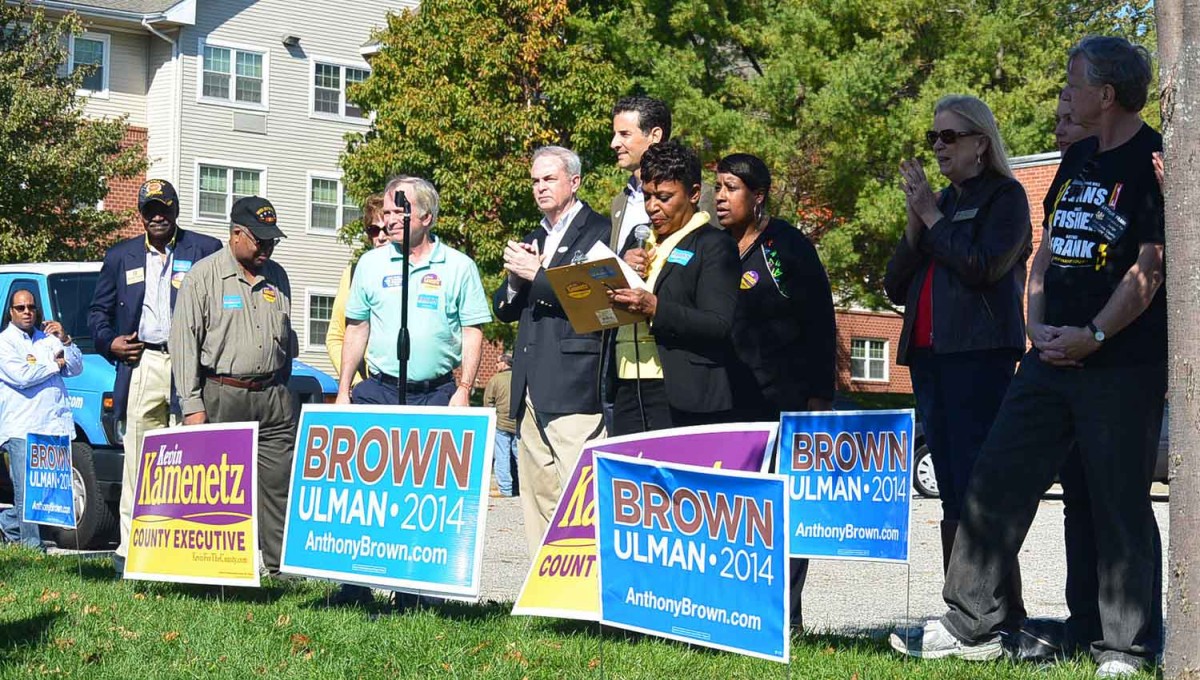Nov. 4 is Gubernatorial Election Day, but the road to victory (or defeat) for hundreds of candidates running for state, local and congressional office began Thursday, Oct. 23, and continues through Thursday, Oct. 30.
In Baltimore County, you can early-vote during those eight days from 10 a.m. to 8 p.m. at eight polling locations, including the Randallstown Community Center, Bloomsbury Community Center and Reisterstown Senior Center Hannah More campus.
On Tuesday, Nov. 4, if you haven’t found the time to vote, you must do so from 7 a.m. to 8 p.m. at your assigned polling place. Remember: Things work a little differently in the general election. In the primary election, voters must vote for candidates of the party in which they are registered to vote. In the general election, you can vote for any candidate regardless of party affiliation. So, registered Democrats can vote for Republican candidates and Republicans can vote Democrat. Independents, who cannot vote in the primary election, get their first opportunity in the general election to vote for the candidate of their choice.
This year, one of the most competitive races is the one for Governor, which pits Democrat Lt. Governor Anthony Brown against Republican businessman Larry Hogan.
Several factors are in play. It’s expected that the overwhelming majority of Republicans will vote Republican. Who will independents support? Will Democrats, particularly African Americans, turn out to elect Brown as the state’s first black governor–and only the fifth black governor in the nation? Will Brown become the Maryland’s first lieutenant governor to win the State House? Will Democrats, which outnumber the GOP 2-to-1, cross over to elect Hogan as Maryland’s fifth Republican governor?
In the end, the election will not be decided solely by who has the better platform and who is best for the state. Very simply, the winner will be decided by who receives the most votes.
Observers predict that Baltimore County will play a pivotal role, as many eligible voters remain undecided. Rainier Harvey Sr., the recently elected chair of the Democratic Central Committee, agreed.
“We have a very basic strategy, and that’s to turn out the vote.” Other get-out-the-vote events will follow the Democratic unity rally held Oct. 25 at the Liberty Senior Center, he said, with the goal to energize the base and keep the state will remain “decidedly blue.”
It used to be that the populous Democratic-leaning jurisdictions of Baltimore City and Montgomery and Prince George’s counties would decide a governor’s race. That changed when Republican Governor Robert Ehrlich eked out a 3-percentage-point victory over Democratic rival Kathleen Townsend Kennedy in 2002, without winning any of the “Big 3” jurisdictions, but with more than 60 percent of the Baltimore County vote.
Since then, candidates consider a solid showing in the county as necessary to win in close statewide races. And when politicians want to court African-American voters, they look to the northwest, particularly Randallstown. Del. Adrienne Jones said at the unity rally that the county’s west side has been instrumental in the Dems’ success, and encouraged the crowd to vote.
It may be a battle of east vs. west, as preliminary polling from Dundalk, Essex and the eastern portions of the county indicates that potential voters may be leaning Republican this year.
Be sure you answer the call to action and vote.
Learn more:
Click here to see important election deadlines.
Find out which Democrats and Republicans are on the election ballot.
General Election, by the numbers

